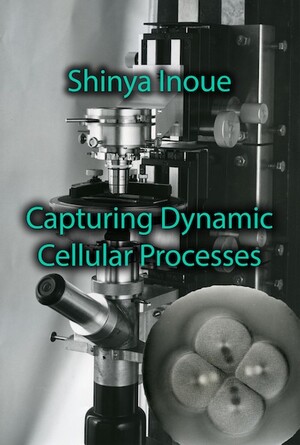In 1948, Shinya traveled to the United States, to attend graduate school at Princeton University. He visited the Marine Biological Laboratory (MBL) at Woods Hole for the first time in June 1949. After doing some work on the eggs of Nereis, a marine worm, Shinya was invited by his friend, Albert Tyler, to examine the spindles in live eggs of Chaetopterus, a tube-worm. Tyler suggested that Inoué examine the effects of colchicine on the spindle. The ancient Egyptians knew of the medicinal benefits of colchicine, which is derived from the autumn crocus, Colchicum autumnale. Doctors still use it to treat gout.
Inoué had to centrifuge the eggs to get yolk and granules out of the way of the spindle, which remained intact and able to proceed through cell division, and used an improved version of the Shinya-scope, dubbed ‘Shinya-scope 2’ which enabled him to use an objective lens that would give him a better resolution. When Inoué used Shinya-scope 2 to observe the Chaetopterus eggs, he could see the spindle, but also the fibers that attached the chromosomes to the spindle, which enabled them to move to the poles of the cell in anaphase. This work, together with studies of birefringent spindles in the Easter lily, Lilium longiflorum, demonstrated that the mitotic spindle was in fact a key component of the cell which played a role in cell division. In using live cells and polarized light to observe them, rather than fixing and staining cells, Inoué showed that the spindle could not be an artefact of fixation. Inoué was able to produce time-lapse movies of the formation and division of the spindle fibers in Lilium longiflorum, and presented these, together with slides of the spindles in Chaetopterus, in the Lillie Auditorium of the MBL.
When he added colchicine to the Chaetopterus eggs, the results were dramatic. Just a couple of minutes after Inoué added colchicine to the seawater the eggs were in, the birefringence of the spindle fibers declined. Shinya reasoned that the spindle fibers had broken down. As the cell had stopped in metaphase, this suggested that the mitotic spindle was essential for moving the chromosomes, which is essential if the cell is to reach the next stage of cell division. Unusually, when the birefringence of the spindles dropped, Inoué observed that the spindle fibers actually shortened and got thinner. In the process of doing this, they pulled the attached chromosomes to the surface of the cell. Shinya reasoned that the spindle could not be shortening by folding, as that would make it fatter, rather than thinner, which is what he actually saw. He concluded from this that the spindle was actually falling apart, it was decaying. The results suggested to Shinya that if the spindle was exposed to colchicine, or cold, it would depolymerize.
For Shinya, the spindle was a polymer which could be broken down, or built back up. From this, Shinya made the remarkable insight that this process of depolymerisation, provided it was not too fast, could be responsible for mechanically moving objects in the cell. It took the scientific community decades to accept the full implications of Shinya’s insights in this early work.
- Shinya Inoué, Pathways of a Cell Biologist. Through Yet Another Eye. Springer: 2016
- Shinya Inoué, Collected Works Of Shinya Inoué: Microscopes, Living Cells, and Dynamic Molecules (With DVD-ROM). World Scientific Publishing Company; Har/Dvdr edition (July 18, 2008).

